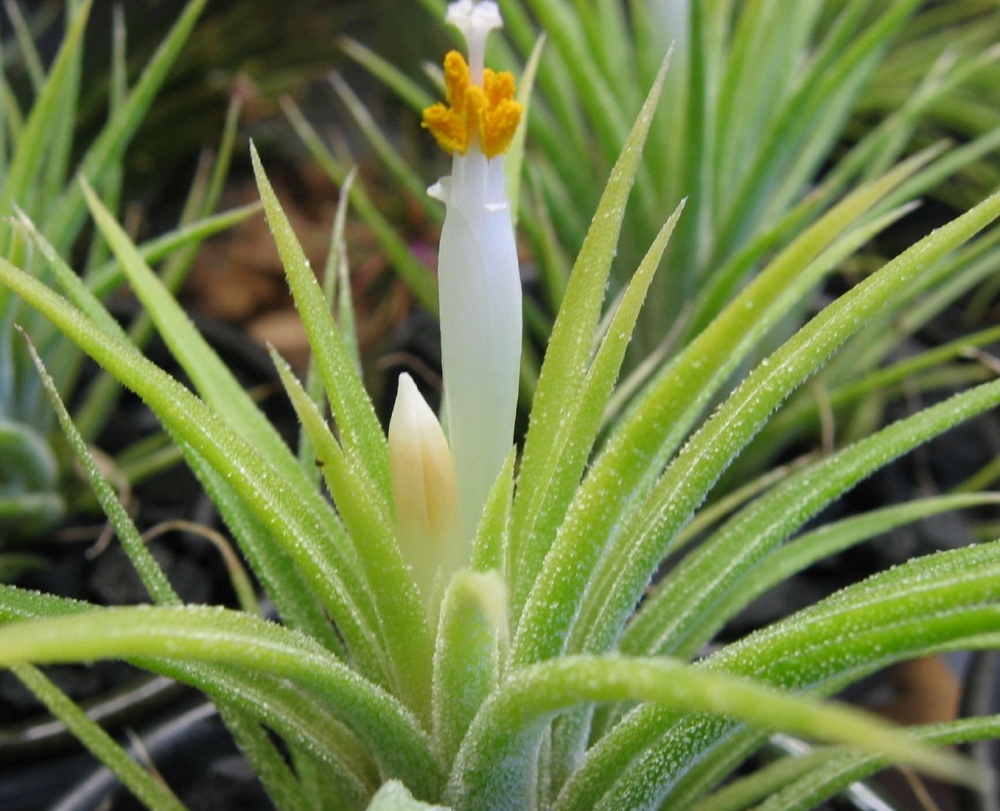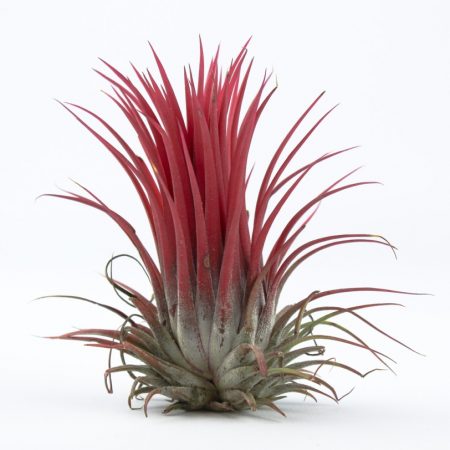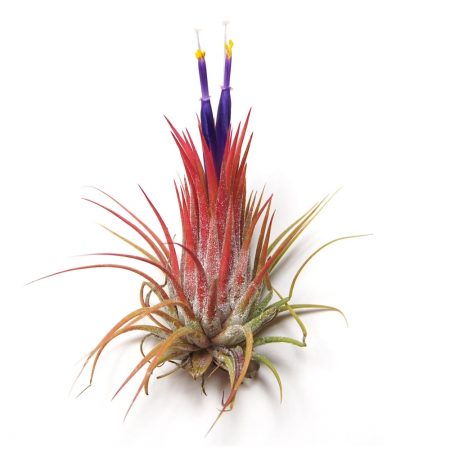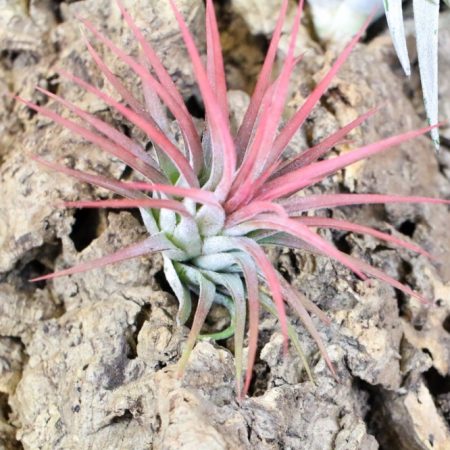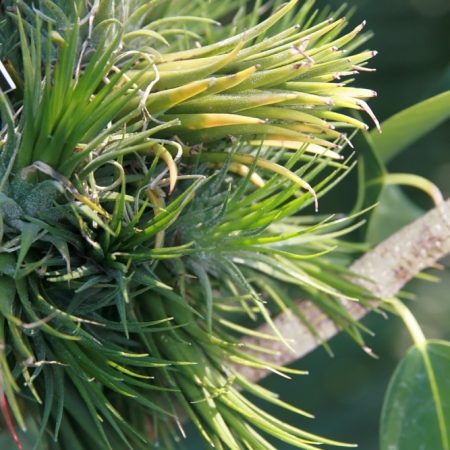(Picture = white-flowered form of Tillandsia ionantha)
Introduction
Tillandsias are epiphytic bromeliads that live on trees or sometimes rocks, mostly in tropical areas. They survive on detritus that collects on their clusters and the water from rain or fog. Often Tillandsias are found in semi-deserts that have high humidity or occasional rains. Though they don’t store much water in their stems like a typical succulent plant, they are remarkably drought resistant. They may survive for weeks in dry times, rehydrate when moisture returns, and be none the worse off. In culture they are called air plants, and they are popular for their unique shapes and sometimes arresting colors.
The Details
T. ionantha is a widespread plant in southern Mexico and Central America. Like other Tillandsias it does not have water-absorbing roots. However, it does use its roots to attach to the branches of trees or shrubs. T. ionantha is popular in cultivation because it is inexpensive, tolerant of household conditions, and only requires casual care. Another reason T. ionantha is popular is because there are so many types, well over 20 cultivars have been described with leaves ranging from variegated, to green, and even red. Also, a variety of shapes are known.
T. ionantha is often grown suspended by a wire, attached to a sea shell with glue, or even placed alone on a table top. It may be misted now and then with tap water, but requires a thorough soaking every week or two. It does well in an east window with an hour or two of bright light but is happy in a west or south window if protected from too much hot sun.
Additional Reading: Genetic Variation in Tillandsia
